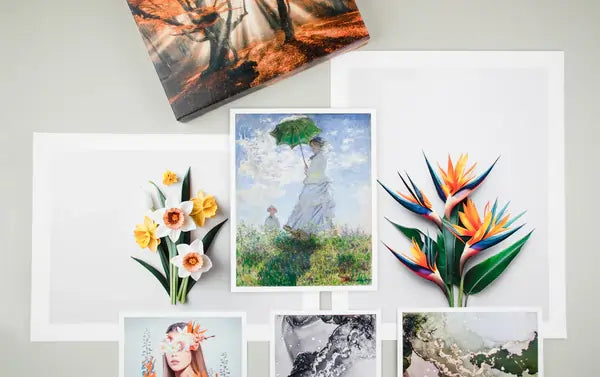Biography
Rachel Altschuler is a Maine painter who is best known for her portrait-like paintings of birds that have drawn the attention of collectors around the world. All of Rachel’s birds are painted against neutral backgrounds, which allows their features to pop.
Using loose brush strokes, she renders their feathery plumes in a way that pays homage to their bright, vibrant personalities. Whether a pensive looking puffin or a regal flamingo, each bird’s unique character is highlighted.

In creating portraits akin to the ones typically reserved for human, she’s reminding us that wildlife and humans are on equal playing field. She acknowledges that birds hold special meaning for many people, and she hopes that through her art she can foster an even deeper connection with them.
Rachel earned her Bachelor’s degree in Art Studio and her Master’s degree in Art Education at Coastal Carolina University. Her art is available online at rachelaltschuler.com, or visit her in person at her gallery in New Harbor, Maine.

Interview
Can you tell us a bit about your journey as an artist? What sparked your interest in art?
“I was always a really creative child who spent most of my time drawing or creating something. Art has always been a big part of my life, but it was during college that I decided to pursue it more seriously.”
Who are your biggest artistic influences, and how have they shaped your work?
“I absolutely love the work of Georgia O’Keeffe, who had a tremendous influence on my approach to color and form. Her ability to capture beauty and abstraction in nature has had a profound effect on how I see the world and express it through my work.”
Could you describe your creative process? How do you typically begin a new piece?
“I always start each painting with a pencil sketch. From there, I block out colors and shapes and slowly build up layers until I achieve the depth and balance I’m aiming for.”

What are some key tools or materials you use in your work, and why are they important to you?
“Some key tools and materials I use include high-quality paints and custom brushes, which allow me to create the unique textures and color blends that are central to my style.”
What has been the most challenging project or phase in your career? How did you overcome it?
“The most challenging projects I’ve worked on are often the ones with tight deadlines and high expectations. I’ve learned to manage my time and maintain my artistic vision under pressure by focusing on one step at a time and staying true to my original concept.”
Can you share a particularly memorable moment in your artistic career?
“My most memorable moment was when I first exhibited my work. Seeing people connect with my art on such a personal level reaffirmed that this was the right path for me.”
How do you balance the commercial aspects of being a professional artist with your creative process?
“I try to balance my painting schedule so that I can keep both my creative integrity and commercial needs in mind. Taking breaks from commissioned work helps me reconnect with my personal artistic goals.”
What advice would you give to artists trying to gain more exposure for their work?
“I would advise artists to network as much as possible, engage with their communities, and always stay authentic to their artistic vision. Consistency and visibility are key in gaining exposure.”

How important is community to your work as an artist? Are there any groups or networks you’re a part of?
“Community is everything to me in my work as an artist. I draw so much inspiration from the artists around me, and I’m part of several local art networks that foster collaboration and support.”
What upcoming projects are you excited about? Can you give us a sneak peek into what’s next for you?
“I’m mostly just excited to continue working in my current style while exploring new themes. I’m planning a series that delves deeper into natural forms and abstraction.”
Where do you see your artistic journey taking you in the next five years?
“In the next five years, I could see myself expanding my studio practice and exhibiting more frequently. I’d also love to collaborate with other artists and perhaps explore new mediums.”

How has working with The Stackhouse Printery impacted your work or opened new opportunities for you?
“My collectors have been thrilled with the quality and detail of the prints The Stackhouse Printery provides, which has allowed me to reach more people and grow my audience.”
What do you think about the role of technology, like high-quality art printing, in today’s art world?
“I’ve touched on this above, but technology and high-quality printing play a crucial role in making art more accessible and preserving the details and quality of original works for broader audiences.”




